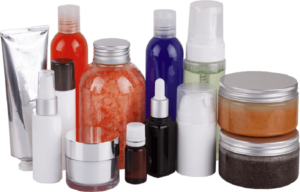Total Intravenous Anesthesia vs Inhalation Anesthesia in Oncological Surgery.

We have many anaesthetic techniques for the same surgical procedure, and each surgery has its peculiarities. As anesthesiologists, we must use our resources in the most beneficial way for our patients but also in the most cost-effective.
From the beginnings of anaesthesia, in the 19th century, with the use of nitrous oxide as an anaesthetic inducer, by Horace Wells and, later, of ethyl ether, by the hand of Thomas Morton, the clinical practice of the anesthesiologist has been evolving and improving. John Snow, the father of anesthesiology, used chloroform to induce obstetric analgesia in Queen Victoria in 1853 for the birth of Prince Leopold. This last drug was used until well into the 20th century, when more powerful inhalational anaesthetics, easier to handle and with fewer side effects, were discovered. Halothane was born first, followed by enflurane and later by isoflurane, until reaching, in the 1990s, sevoflurane and, more recently, desflurane, halogenated anaesthetics with which we currently work.
In parallel, intravenous drugs were discovered. Barbiturates (barbital and phenobarbital) were developed at the beginning of the 20th century, followed by thiopental in 1934 and, finally, in 1989, propofol, the most widely used inducing agent today, was approved for clinical use. Over the years, as new drugs were discovered, anesthesiologists have been incorporating them into their daily practice to study their efficacy and actual usefulness in different clinical situations.
Continuous analysis, through the scientific method, is a critical praxis to optimise our work and discover the real impact of drugs on our physiology. For this reason, it is essential to review and question ourselves daily if, given the multitude of possibilities that exist, we are offering the best anaesthesia to our patients.
Two different scenarios: Risks and Benefits
The pharmacokinetic and pharmacodynamic scenario of halogenated and intravenous agents is different, as are the benefits and side effects they cause, with other implications for the physiology and, probably, for the morbidity and mortality of post-surgical oncology patients. The use of intravenous anaesthesia (specifical propofol), compared to inhalation anaesthesia, has shown acute beneficial effects (1). However, is the clinical result between one and other drugs different enough to change the anaesthetic strategy during oncological surgery maintenance?
The perioperative period is associated with multiple factors that could benefit tumour survival, including the inflammatory and stress response to surgery (with the release of prostaglandins and catecholamines), and the relative immunosuppression coexisting with the oncological process, the possible direct effects caused by the medication administered and postoperative pain. More specifically, the inflammation associated with tissue trauma causes the release of cytokines (IL-6, prostaglandin E2) which in turn produce inhibition of the activity of “natural killer” (NK) cells, essential in the postoperative period by being responsible for detecting and destroying circulating tumour cells. Thus, any drug that inhibits the capacity of NK cells would be detrimental to the prognosis of the oncological disease.
Halogenated Agents
Anaesthetic maintenance in oncological surgery can be performed using halogenated agents or intravenous agents, drugs with different benefits and harms. On the one hand, the former is incorporated into operating room ventilators, their use being simple and quick to start, allowing easy titration of anaesthetic depth, a dose-dependent decrease in skeletal muscle tone and cerebral metabolic rate, and such as, in some cases, bronchodilation. However, they have been associated with dose-dependent vasodilation and respiratory depression, malignant hyperthermia, increased incidence of nausea and vomiting, and hepatopulmonary toxicity. On the other hand, at an ecological level, they have been negatively linked to global warming. Different laboratory studies have suggested mechanisms by which halogenated agents cause a pro-inflammatory state and suppression of the immune system (inhibition of NK cells and helper T lymphocytes, as well as an increase in the levels of the hypoxia-inducible factor HIF1A ), thus favouring metastases. In this line, some studies carried out in humans have observed higher rates of cancer recurrence after surgeries with halogenated agents. However, the molecular mechanisms by which immunosuppression would not be precisely known and the clinical evidence in this regard is still controversial. Knowing that approximately two-thirds of patients diagnosed with cancer will undergo surgery under general anaesthesia as the first line of treatment (curative or palliative intent), we should assess the effects of anaesthesia with halogenated agents on cancer recurrence and the broad impact that it could have on the health of our population.
Intravenous Anesthetics
On the other hand, some intravenous drugs have been shown to have different beneficial effects on the maintenance of anaesthesia. The main protagonist is propofol and total intravenous anaesthesia (TIVA) using TCI systems (“target-controlled infusion”).
In clinical practice, studies have related propofol to less postoperative pain and morphine on the first day after surgery, a lower incidence of nausea and vomiting, a faster postoperative recovery, and less environmental contamination. No one has seen a relationship with malignant hyperthermia.
In animal studies, propofol is neuro and nephroprotective and, in different carcinogenic lines in vitro, it has shown immunoprotective, anti-apoptosis, anti-inflammatory, anti-oxidative and anti-tumour effects (maintaining anti-tumour immunity, preventing the increase in HIF1A levels, suppressing the capacity for survival and tumour spread, allowing the activation and differentiation of “helper” T lymphocytes and preserving the activity of NK cells).
A debate
Despite the benefits of propofol found in vitro and in animals in routine medical practice, the clinical evidence on the lower recurrence of cancer is not clear. There are articles favouring a lower cancer incidence and better overall survival after curative surgery in different oncological fields: breast, oesophagal, colon, and rectal cancer, among others. But at the same time, other studies show no differences after breast cancer surgery when comparing the procedure with regional anaesthesia (paravertebral block), associated with conventional TIVA propofol systems, vs general anaesthesia with volatile agents (sevoflurane)and opioids. Nor have other investigations seen differences in recurrence or more remarkable overall survival in oncological digestive surgery (esophagectomy, gastrectomy, hepatectomy, cholecystectomy, pancreatectomy, colectomy, proctectomy, etc.).
Finally, relative to other intravenous agents, studies show that thiopental suppresses NK cell activity, as does ketamine. The latter, in addition, could increase the levels of antiapoptotic protein, increasing the ability of cells to invade other tissues and proliferate. On the other hand, studies carried out in murine and laboratory models on the effects of opioids are inconclusive. On the one hand, they suggest that they inhibit both cellular and humoral immune functions. On the other hand, it is believed that morphine could reduce the negative impact on the immune system caused by pain, thus producing a beneficial effect on the oncological disease through μ-opioid receptors.
Lastly, lidocaine has an anti-inflammatory effect, reducing IL-1, tumour necrosis factor-alpha and IL-8. In addition, there is strong in vitro evidence about the protective effect of lidocaine in preventing tumour recurrence, although clinical evidence is lacking.
Conclusions
With all the information described above, assessing the positive and negative effects of the anaesthetic agents related, anaesthesia with TIVA-TCI propofol seems to be a promising option for anaesthetic maintenance. The anti-tumour and anti-inflammatory effects, the lower incidence of nausea and vomiting, the faster post-surgical recovery, and less environmental contamination, among others, would make TIVA-TCI with propofol a cost-effective alternative. However, all the current evidence has been obtained from in vitro/in vivo, animal and human studies (albeit retrospective). There is a significant lack of standardisation in many tests. So, it is controversial to state that TIVA-TCI with propofol is a better alternative for the maintenance of anaesthesia and the prevention of cancer recurrence. Research in the different cancer subgroups must continue to advance to obtain more apparent conclusions in this regard.
In conclusion, it is early to define a better strategy to follow in cancer surgery. Randomised, international studies with a large number of patients and with a longer follow-up of all of them are lacking. Only in this way will it be possible to assess the actual rate of cancer recurrence and long-term survival after using propofol with TIVA-TCI systems vs halogenated agents. The current evidence is controversial; the scientific method must finish tipping the balance.







